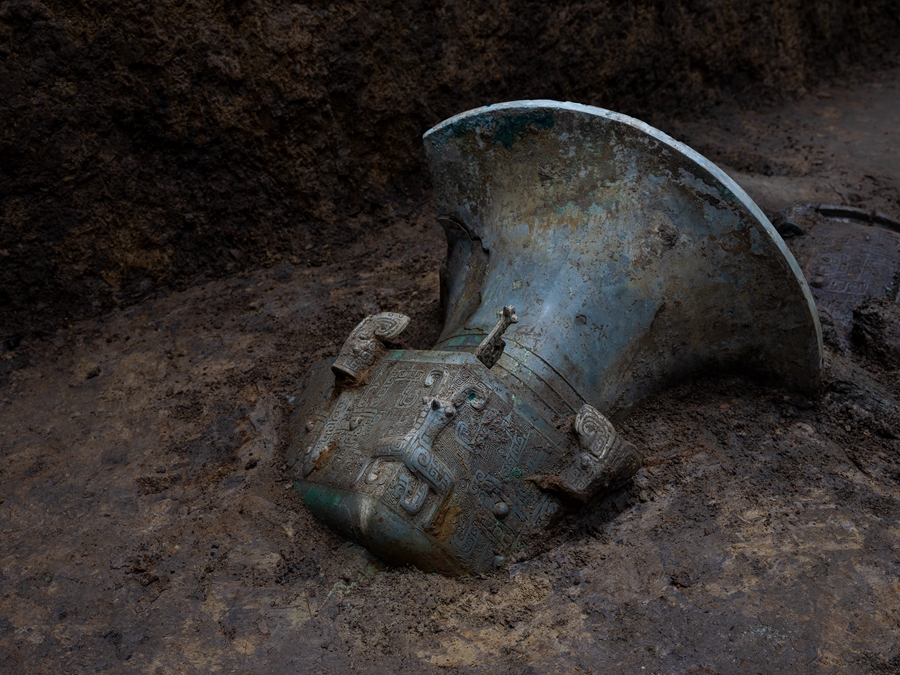

An example of this was the discovery of a jade cong, a Neolithic ritual artifact typical to the 5,000-year-old Liangzhu Culture of Zhejiang province nearly 2,000 kilometers away to the east, at the site. An abundant collection of seashells also connects this inland site to the South China Sea.
According to Lei, through archaeological research, influences of Sanxingdui culture have been found to expand to today's Shaanxi province in the north and Yunnan province-and even the northern part of Vietnam-to the south.
"People once had a widely-held view that Central China was the cradle of ancient Chinese civilization, and Sichuan was thought of as a marginal area," says Shi Jinsong, a researcher with the Institute of Archaeology at the China Academy of Social Sciences. "But findings in Sanxingdui unveiled an early-stage regional state, which has changed our view of history.
"With a new perspective of Sanxingdui, we can better see its connection with surrounding civilizations," Shi says. "The unearthed artifacts from the pits cannot be isolated instances. More findings will appear that will hopefully lead to the workshops that produced the artifacts, unveiling a bigger picture of cultural communication."
Some unique phenomena at the site leaves more room to understand its importance from a global perspective.
As no Shang Dynasty bronzeware figurines have been found so far that are forged in the shape of humans, the idolatry practices uncovered in Sanxingdui have aroused speculation about a possible connection to ancient civilizations in West Asia, or even further afield.
"But their specific production method of bronzeware is thoroughly different," Sun, from Peking University, explains. "And compared with those bronze figurines, cast in a more realistic style in the West, the symbolic Sanxingdui figurines are more like a variety of totem poles.